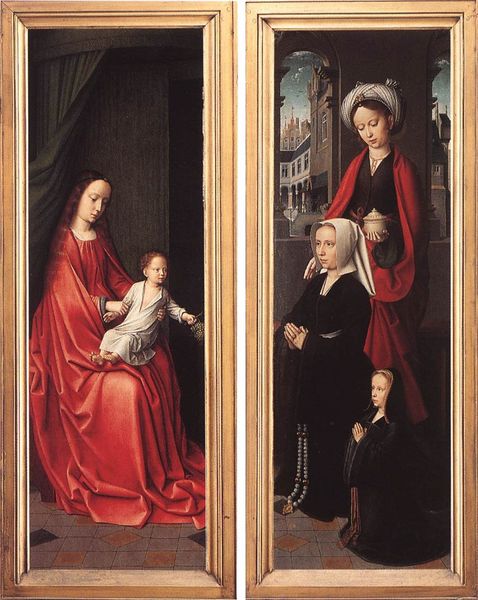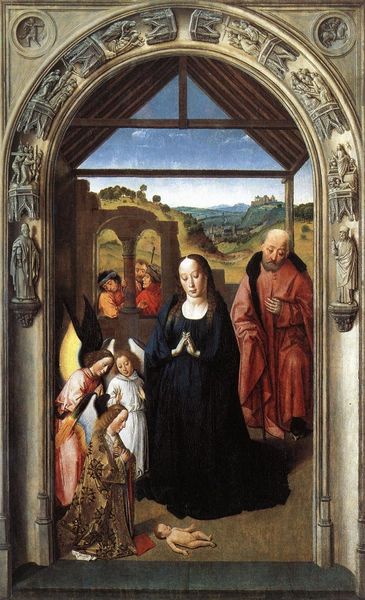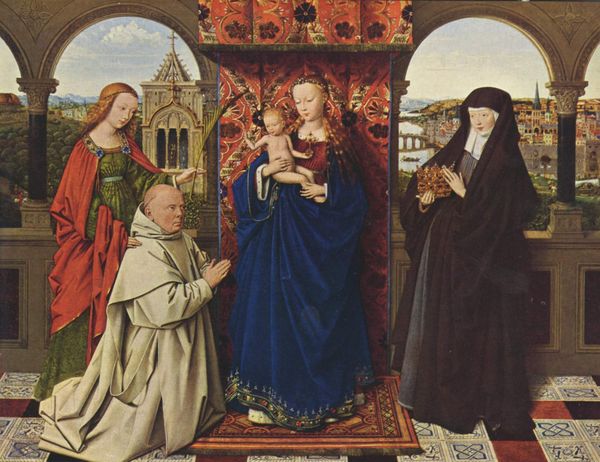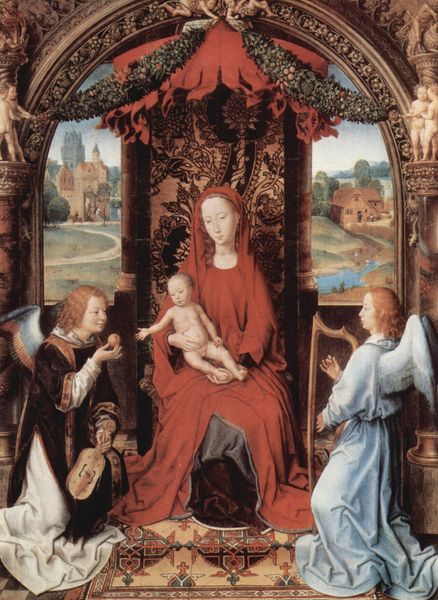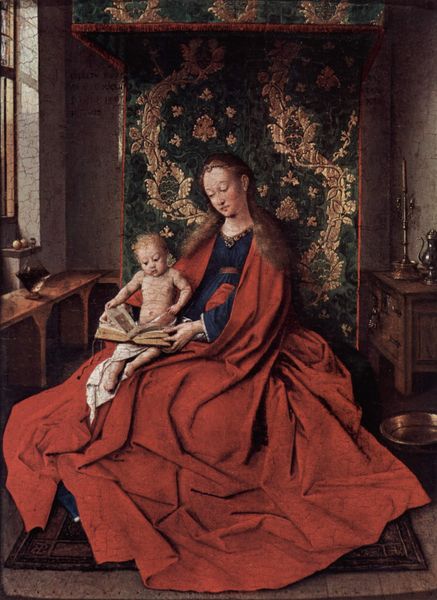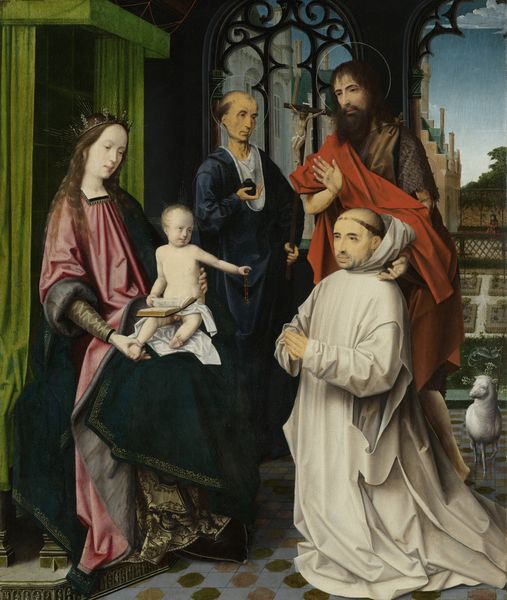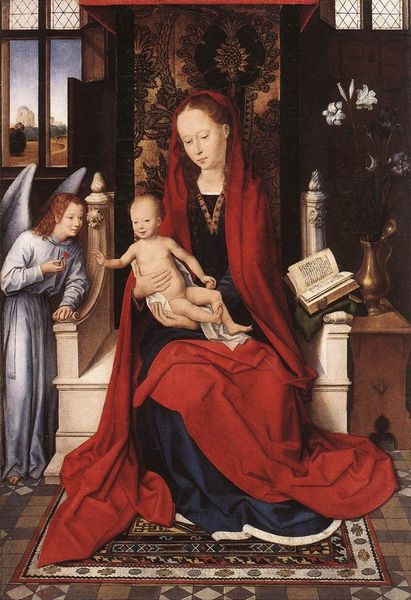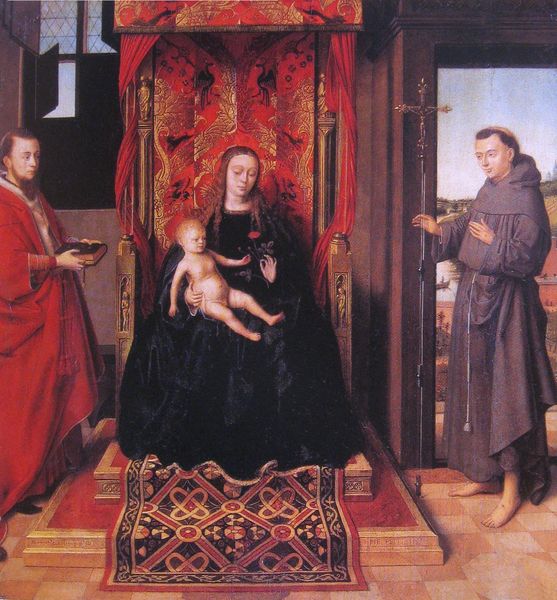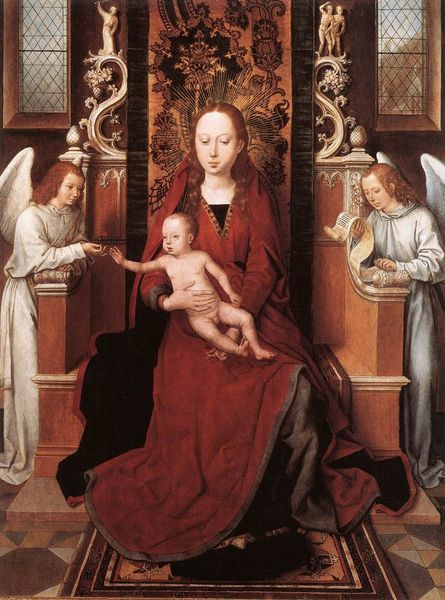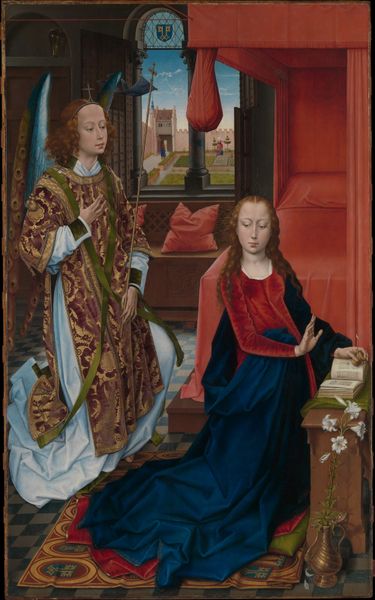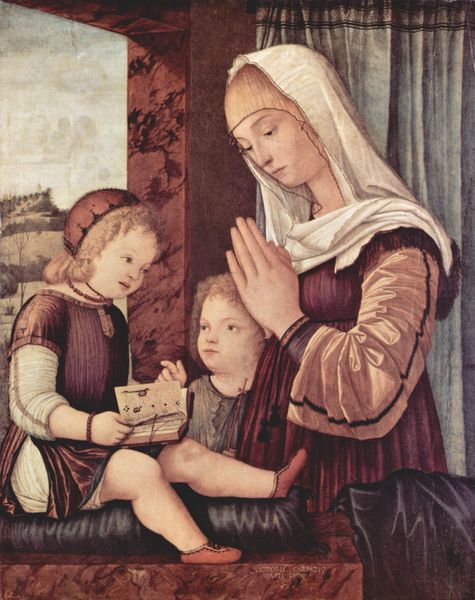
Virgin and Child with St. Anthony the Abbot and a Donor 1472
0:00
0:00
tempera, painting, oil-paint
#
portrait
#
tempera
#
painting
#
oil-paint
#
figuration
#
11_renaissance
#
history-painting
#
northern-renaissance
Dimensions: 93 x 55 cm
Copyright: Public domain
Curator: Hans Memling, a key figure in the Northern Renaissance, completed "Virgin and Child with St. Anthony the Abbot and a Donor" around 1472. It’s a tempera and oil on panel painting. Editor: The overall feeling is one of serene devotion. There's a powerful stillness to it. Even with four figures, the composition feels centered and deeply contemplative. Curator: Notice how Memling balances the sacred and the secular, placing the Madonna and Child in what appears to be a contemporary domestic setting, subtly merging heaven and earth. Editor: Yes, it's not some far-off, unreachable ideal of holiness; rather, it suggests a holy moment that can and does enter the human sphere. But the gender dynamics—Mary holding the child, essentially anchoring the composition, while the men offer support or devotion—feel very rooted in the patriarchal norms of the era. Curator: Indeed. St. Anthony, with his T-shaped staff, would have been invoked for protection against disease. Consider his inclusion alongside the donor—a direct appeal for divine favor and perhaps a reflection of anxieties about health and mortality in that period. Saint Anthony's presence connects the sacred figures to the mortal realm. Editor: I'm struck by how the architecture itself is so precisely rendered. This isn't just about faith or figures; it's also a statement about wealth, status, and control over one’s environment, a very earthly demonstration of power. And you know, it's fascinating that even though the scene is supposed to be one of pure religious feeling, it is so obviously constructed to reinforce social hierarchies. The composition implicitly elevates the sacred over the secular, men over women, and, of course, the wealthy donor above everyone else. Curator: Precisely. The tapestry hanging behind Mary, the tiled floor—they all contribute to a feeling of grounded reality and are rich in symbolism. It showcases how the integration of detail, naturalism, and overt displays of wealth acted as visual theology, creating a narrative where divinity and material existence were tightly interwoven. Editor: So, the devotional image also operated as a sort of social contract. Curator: Precisely. Considering the layered symbolism and the tangible wealth depicted, one can't help but see beyond the surface and realize that the Virgin and Child exist within the intricate structures of both faith and society. Editor: Seeing Memling's technique within that framework shifts my understanding of it entirely. Curator: Absolutely. Now that you've explored it through this lens, how do you view this Renaissance devotional piece? Editor: Well, understanding the artwork within a wider societal context brings a completely new meaning. I guess, if one can view these figures with the lens of both, the symbolism and the culture behind it, it makes for a more thought provoking study.
Comments
No comments
Be the first to comment and join the conversation on the ultimate creative platform.
